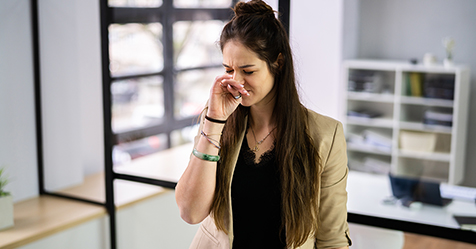Early in 2014 it’s the perfect time of year to re-evaluate current processes and procedures in your facility’s cleaning program and set new goals for the New Year.
Facility managers have the responsibility of ensuring a clean school campus for teachers, staff and students to enjoy.
Following are tips to help facility managers provide a hygienic learning environment in the New Year and beyond.
Identify High & Low Risk Areas
Facility managers should perform risk assessments to help identify high and low risk areas of their school campus.
High risk areas, which can be a breeding ground for germs, require more frequent cleaning and disinfecting to help prevent transmission of disease.
Examples include: Restrooms, classrooms, locker rooms, gymnasium, cafeteria and nurse’s office.
Within these high risk areas, facility managers should note high-touch surfaces, such as toilet levers, towel dispensers, shared computer keyboards, shared desks, doorknobs, showers and shower faucet handles, gym mats, workout equipment and cafeteria tables, to name a few.
These high-touch surfaces should be consistently cleaned as they are touched by many different hands that can contribute to the spread of germs.
Low-risk areas need less frequent cleaning and may include offices, hallways and windows.
Facility managers can assign the priorities and frequencies to both high and low risk areas to help prevent the spread of bacteria and illnesses from one student or staff member to another.
Develop Cleaning And Disinfecting Protocol
Once high and low risk areas and high-touch surfaces have been identified, it’s important to develop proper cleaning protocol for staff to clean and disinfect these areas as needed.
Mark your calendar this year to educate cleaning staff on the importance of these tasks, when to do the tasks and how to do them properly.
The training should include teaching cleaning staff the difference between cleaning and disinfecting, as both are important aspects of an effective cleaning program.
Cleaning is the process of removing the soil from a surface, as soil can harbor germs such as influenza, while disinfecting is the process of killing the germs.
Cleaning well allows the disinfecting agents to work more effectively than just disinfecting alone.
Multipurpose products that have been formulated to remove a broad range of target soils and disinfect simultaneously can be very efficient and effective in cleaning educational facilities.
Cleaning and disinfecting in a single step can help save labor time and money, simplify cleaning and disinfecting procedures which aids in getting the job done right the first time and reducing the need for rework, as well as reducing overall product usage.
Be sure to refer to label instructions for usage instructions and proper dwell times.
In a recent Cleaning Industry Insights Survey of managers of cleaning operations, the most helpful factors for performing cleaning services were “products that get the job done the first time (45 percent),” “products that work quickly (29 percent)” and “a simpler routine that all staff can get accustomed to (26 percent).”
Make Your School Shine
It’s been shown that facility appearance ratings can drop by as much as 75 percent if floor shine creates a negative first impression.
Increase school pride by properly maintaining school floors.
Facility managers can do this by adopting and following a regular maintenance schedule.
Your daily routine should include dust mopping and damp mopping in high traffic floor spaces, like halls or common areas.
Dust mopping helps clear away larger elements of surface dirt while damp mopping helps remove more particulates as well as oily soil.
Auto scrubbing can also be a good option if it’s feasible in your facility.
Depending on your school campus and equipment, you should also burnish or buff the floor as part of ongoing maintenance.
Also, do a deep scrub and recoat periodically, for a fresh new look and shine.
Everyone Plays A Part
Students and staff can also do their part to help keep the campus clean and help fight the spread of germs.
Handwashing is one of the most important steps that anyone can take to avoid getting sick and, in turn, spread the illness to others.
Post reminders for students and staff to wash their hands frequently, especially after using the restroom, before meals or whenever they become soiled.
And, make sure your facility’s soap and paper towel dispensers are regularly stocked for daily use.
Also, encourage students to respect their school campus by throwing away trash rather than littering.
Make sure trash cans are regularly emptied and conveniently placed throughout the school grounds for ease of use.
By establishing or fine tuning your cleaning program for 2014, as well as providing ongoing training for cleaning staff, facility managers can help provide a hygienic environment for students, staff, teachers and visitors.
Creating a more efficient and effective cleaning program will result in a cleaner campus that everyone can be proud of as we start fresh in the New Year.


